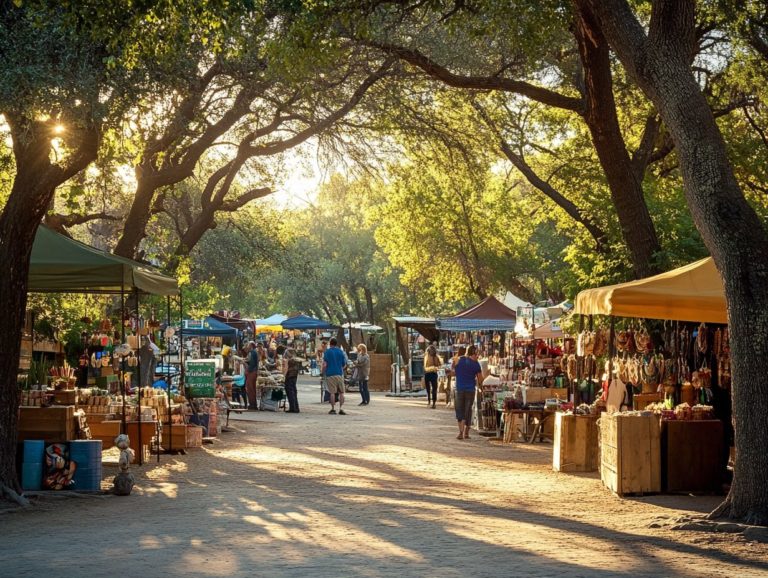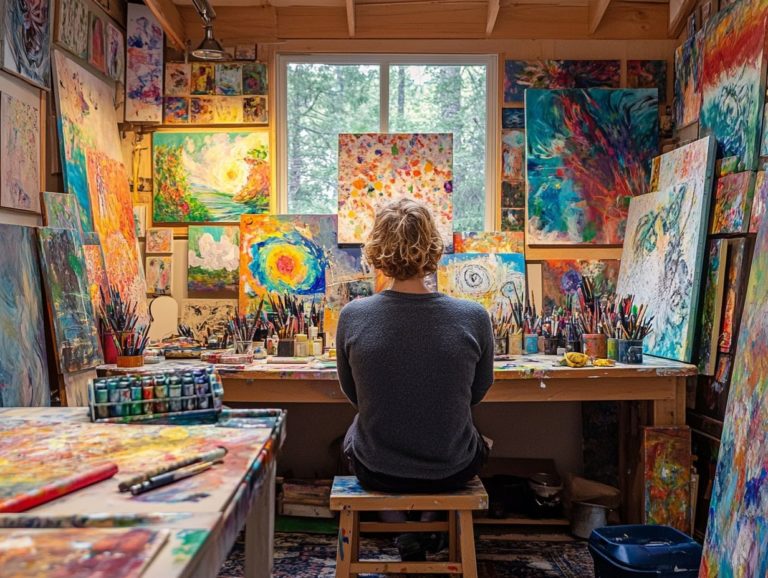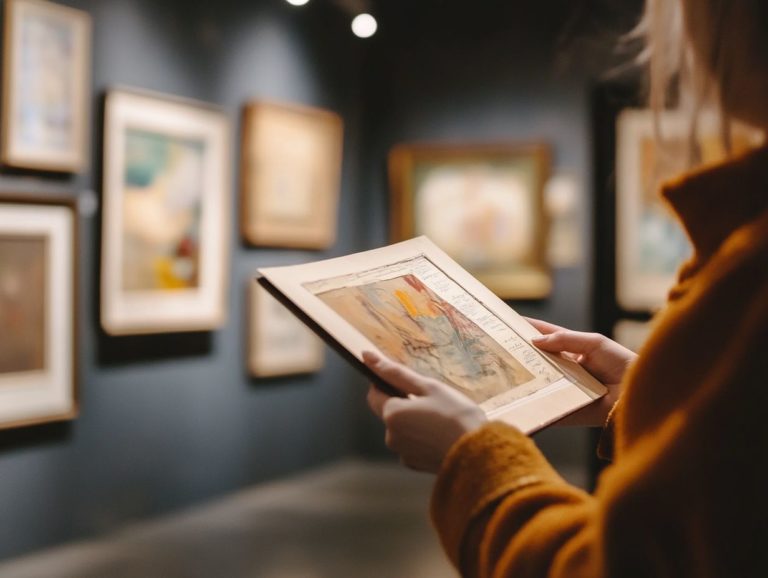How to Start a Collectible Art Portfolio
Collectible art portfolios combine financial investment with personal enjoyment. This makes them appealing to both new and seasoned collectors.
This article explores the benefits of owning a collectible art portfolio. It will highlight potential financial returns and the joy of curating your own collection.
You ll learn how to select the right art pieces, get tips for building and maintaining your portfolio, and discover strategies for selling or trading your art for maximum returns.
Let s dive into the exciting world of art collecting!
Contents
- Key Takeaways:
- Benefits of Owning a Collectible Art Portfolio
- Choosing the Right Art Pieces for Your Portfolio
- Building and Maintaining Your Collection
- Selling and Trading Your Collectible Art
- Frequently Asked Questions
- What is a collectible art portfolio?
- Why should I start a collectible art portfolio?
- How do I choose which art pieces to include in my portfolio?
- Do I need a large budget to start a collectible art portfolio?
- Where can I purchase collectible art pieces for my portfolio?
- How can I ensure the safety and preservation of my collectible art portfolio?
Key Takeaways:
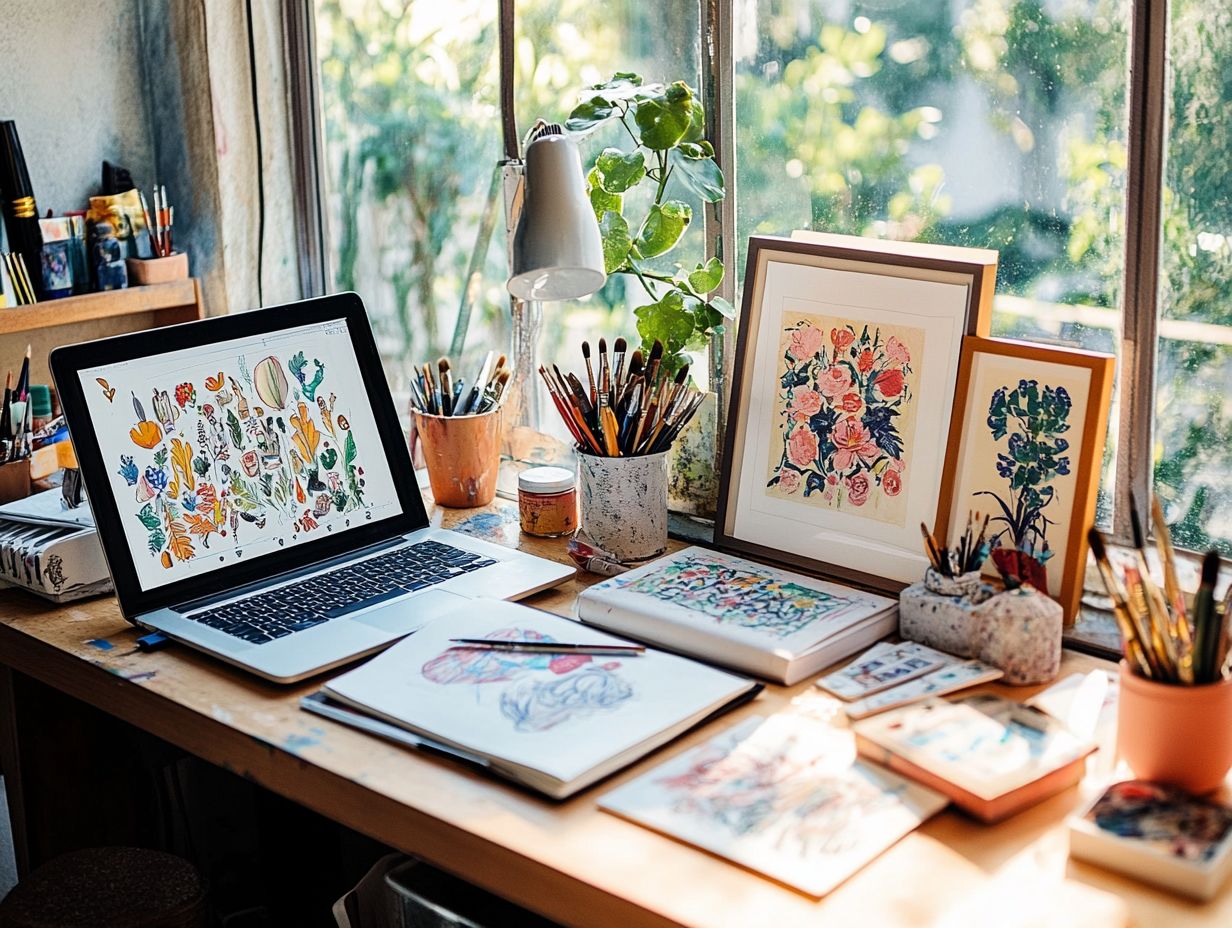
Invest in collectible art for both financial returns and personal enjoyment. Consider factors such as artist reputation, rarity, and historical significance when choosing art for your portfolio.
Store and care for your collection properly to maintain its value and longevity.
What is a Collectible Art Portfolio?
A collectible art portfolio is a carefully chosen collection of artworks that reflects your investment strategy in the art market. It can include various styles from renowned artists like Andy Warhol, Banksy, and Jean-Michel Basquiat, and is increasingly seen as part of the rise of collectible art investments.
This portfolio showcases artistic expression while serving as a financial asset with pieces selected for their rarity and potential appreciation over time. You might include paintings, sculptures, and limited edition prints that reflect your tastes and investment goals.
Creating this portfolio satisfies both your personal preferences and your potential for financial gain a balance of enjoyment and investment.
Experts like Richard Polsky emphasize the importance of condition reports and valuation assessments. These insights highlight what affects a piece s market value.
Understanding these elements helps you make informed choices, enhancing both the personal and financial value of your collection.
Benefits of Owning a Collectible Art Portfolio
Owning a collectible art portfolio offers numerous benefits that blend financial returns with personal enjoyment. This unique opportunity allows you to engage with market trends and influential artists, enriching your experience as a collector.
You can appreciate the beauty of art while viewing your portfolio as a possible investment a collection that could grow in value and diversify your overall investment strategy.
Financial Returns and Personal Enjoyment
A well-chosen collectible art portfolio can provide significant financial returns and immense personal enjoyment, blending passion with investment.
In today s market, fine art tends to appreciate, especially pieces by iconic artists like Banksy, Frida Kahlo, and Jean-Michel Basquiat. Auctions reveal market trends, helping you make smart purchasing decisions.
Owning a piece that resonates with you brings unmatched emotional satisfaction, transforming your walls into galleries that tell your unique story.
Collectibles like contemporary paintings, rare sculptures, and vintage prints can grow more attractive over time, becoming cherished possessions and wise financial strategies.
Choosing the Right Art Pieces for Your Portfolio
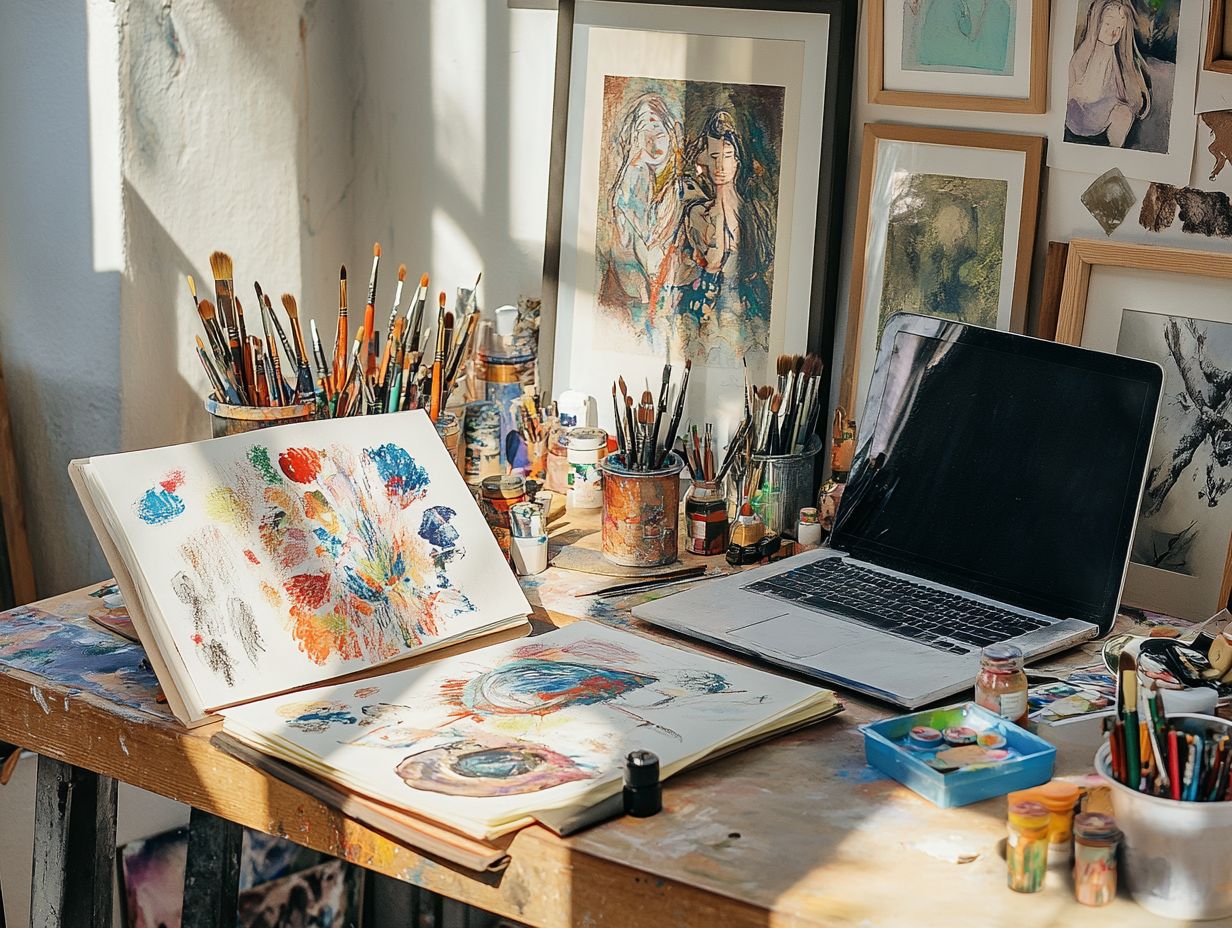
Selecting the right art pieces is vital for maximizing investment potential while ensuring personal satisfaction. This process involves careful consideration of valuation, rarity, and the reputation of esteemed artists like David Hockney and Bridget Riley.
Factors to Consider
When selecting art pieces for your portfolio, it s essential to consider several key factors:
- The artwork’s history
- Condition reports
- Current market trends shaping the art landscape
The artwork’s history is critical; it establishes the origin and journey of each piece, allowing you to trace its path from the artist to its current owner. This background enriches the artwork s narrative, making it more attractive and potentially enhancing its value.
Condition reports hold equal weight, offering a thorough assessment of the artwork s physical state. By examining these reports, you can evaluate the longevity and quality of a piece, which influences your investment decisions.
Grasping these elements will equip you with the knowledge needed to navigate the world of art buying with confidence and sophistication.
Building and Maintaining Your Collection
Building and maintaining your art collection is a thoughtful process. It emphasizes careful acquisition of each piece and prioritizes proper storage and care. This approach ensures that every artwork retains its value and allure over time.
Successful collectors understand that it involves comprehensive management. This includes staying informed about market trends and implementing best practices for preservation to enhance the longevity and impact of the collection.
Tips for Finding and Acquiring Art Pieces
Finding and acquiring the right art pieces for your collectible art portfolio is an exciting adventure that can be both thrilling and daunting! By employing strategic tips, you can significantly boost your success in this endeavor, especially by understanding the basics of collectibles and art.
One effective approach is to attend art fairs. These events showcase a diverse range of artworks from various artists and galleries, offering you an excellent opportunity to uncover unique pieces that might become the crown jewels of your collection.
Engage with local galleries; this not only allows you to build valuable relationships with curators but often leads to exclusive insights into emerging artists that the general public may not yet know about.
Participate in auctions to access rare works at competitive prices, creating a thrill that every collector craves.
Tap into market reports for valuable context and trends to guide your buying decisions, ensuring you make informed choices.
Finally, don t overlook online platforms like MyArtBroker, which are highly recommended for seamless transactions in buying and selling art. This way, you can navigate the art world with confidence and finesse.
Proper Storage and Care
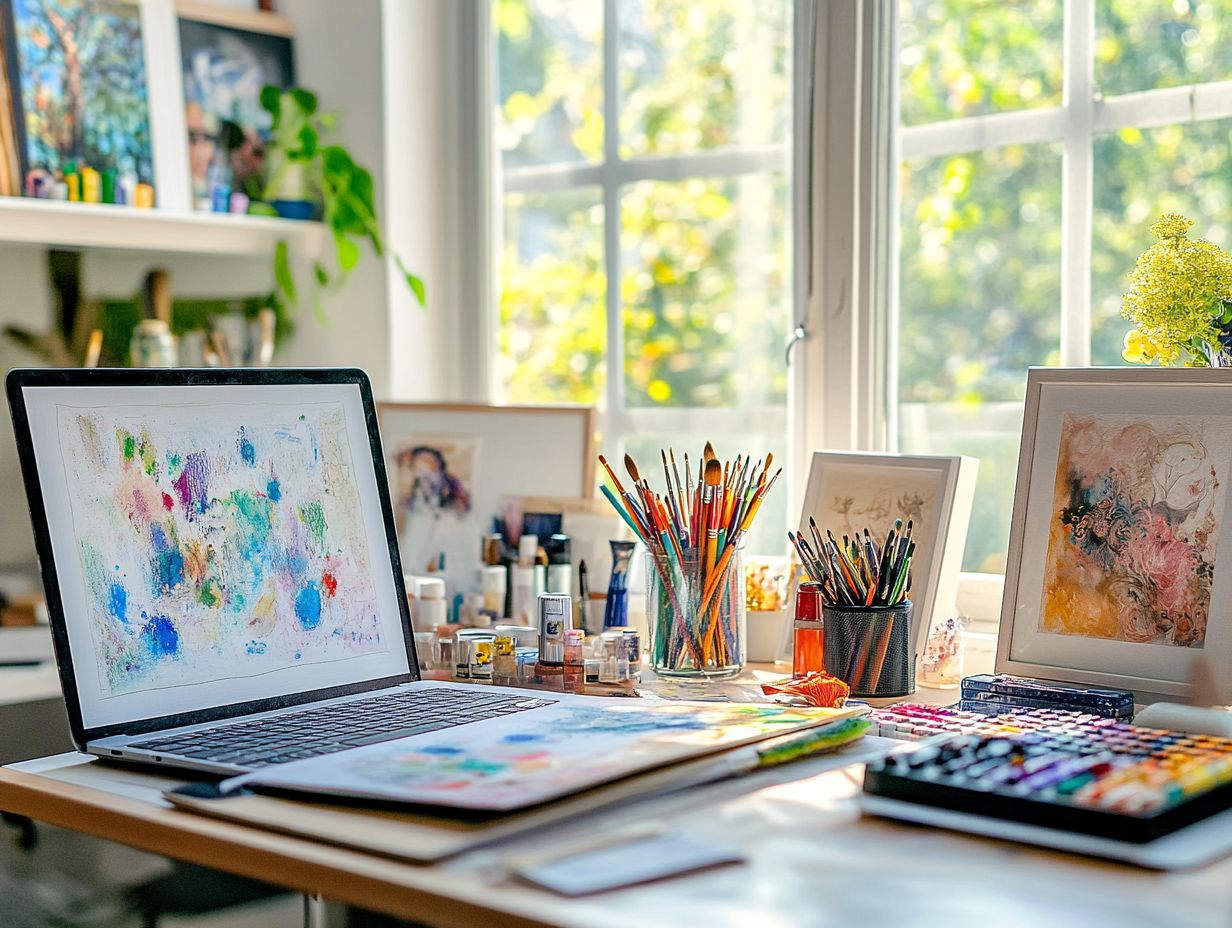
Proper storage and care are essential for maintaining the integrity and value of your art collection. You want to ensure that each piece is preserved in optimal conditions, ready to withstand the test of time.
Consider utilizing climate-controlled environments that regulate both temperature and humidity this minimizes the risk of damage from fluctuations.
Your collectible assets require specific techniques, including using acid-free materials for framing and storage to help prevent deterioration.
Regularly clean your artwork with suitable tools and products to maintain its appearance and remove dust or grime. Pay attention to display conditions; ensure that your art is positioned away from direct sunlight, as this can cause fading and degradation over time.
By taking these steps, you ll safeguard your valuable treasures for years to come.
Selling and Trading Your Collectible Art
Navigating the world of selling and trading collectible art can be both rewarding and intricate. It demands a profound understanding of the art market, especially when aiming to maximize returns on your investments in pieces by celebrated artists like Keith Haring and Joan Mitchell.
Start curating your unique collection today!
Strategies for Maximizing Returns
To maximize your returns when selling art, you must understand market trends and auction dynamics. This knowledge helps you achieve the best outcomes as a collector.
Use current market reports to identify emerging artists and popular movements. Choosing the right auction house can significantly impact your sale price.
Understanding peak selling seasons is crucial. For example, spring sales often see a surge in interest.
Analyze successful selling techniques used by others. Consider setting competitive reserves and improving your art’s presentation with professional photography.
Frequently Asked Questions
What is a collectible art portfolio?
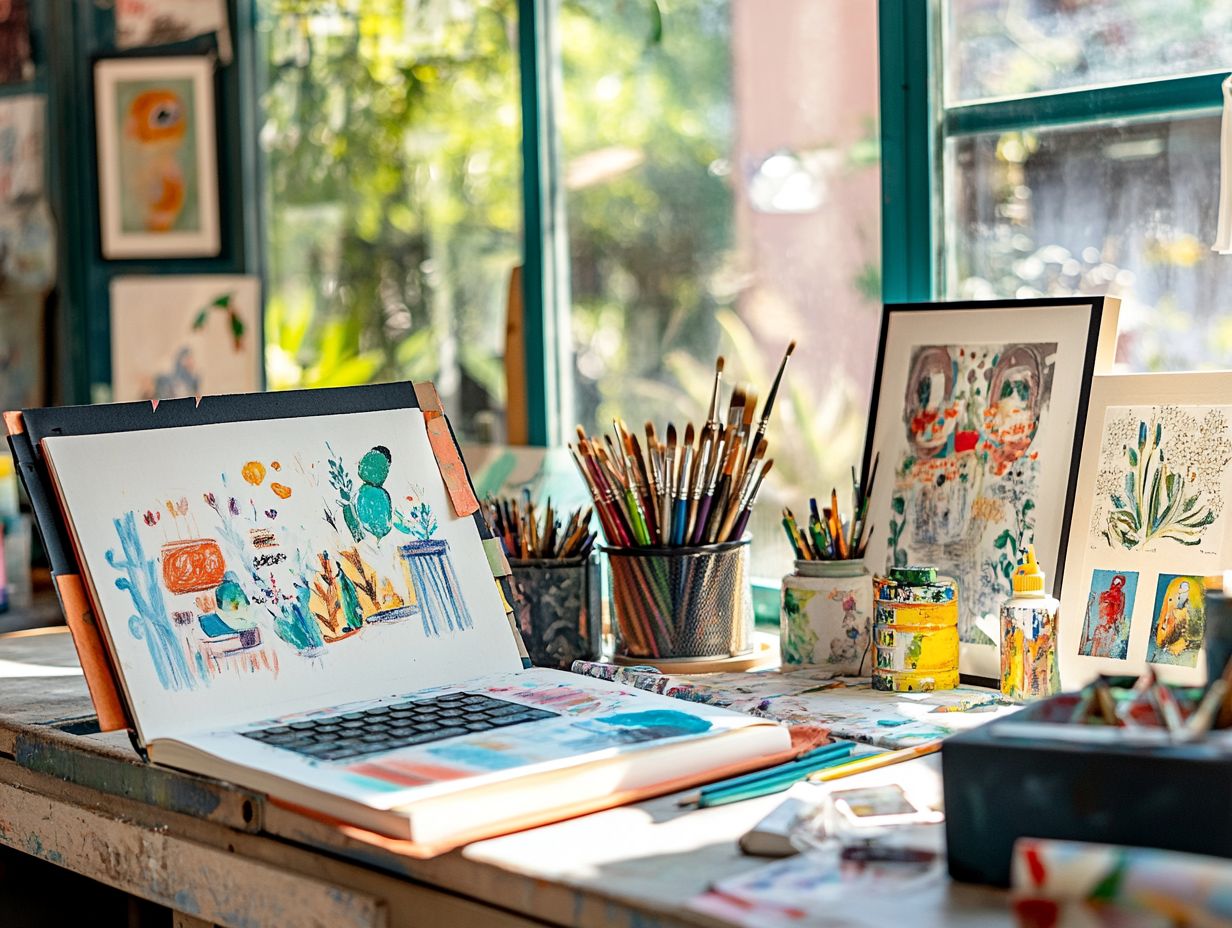
A collectible art portfolio is a collection of valuable artworks, often created by well-known artists. These pieces can serve as investments that you can buy and sell for a profit.
Why should I start a collectible art portfolio?
A collectible art portfolio diversifies your investments and can help you earn profit over time. It also lets you enjoy valuable art from various artists.
How do I choose which art pieces to include in my portfolio?
When selecting art for your portfolio, consider the artist’s reputation, the piece’s quality and rarity, and its potential value increase over time. Each choice matters!
Do I need a large budget to start a collectible art portfolio?
Collectible art can vary in price. Set a budget and consider starting with smaller investments to gradually build your portfolio, using strategies for beginners in art investment.
Where can I purchase collectible art pieces for my portfolio?
You can buy collectible art from galleries, auctions, online marketplaces, or directly from artists. Always research to verify authenticity and value before purchasing.
How can I ensure the safety and preservation of my collectible art portfolio?
To protect your art, store and display it in a safe environment, avoiding direct sunlight and moisture. Consider insuring your collection for added peace of mind.

